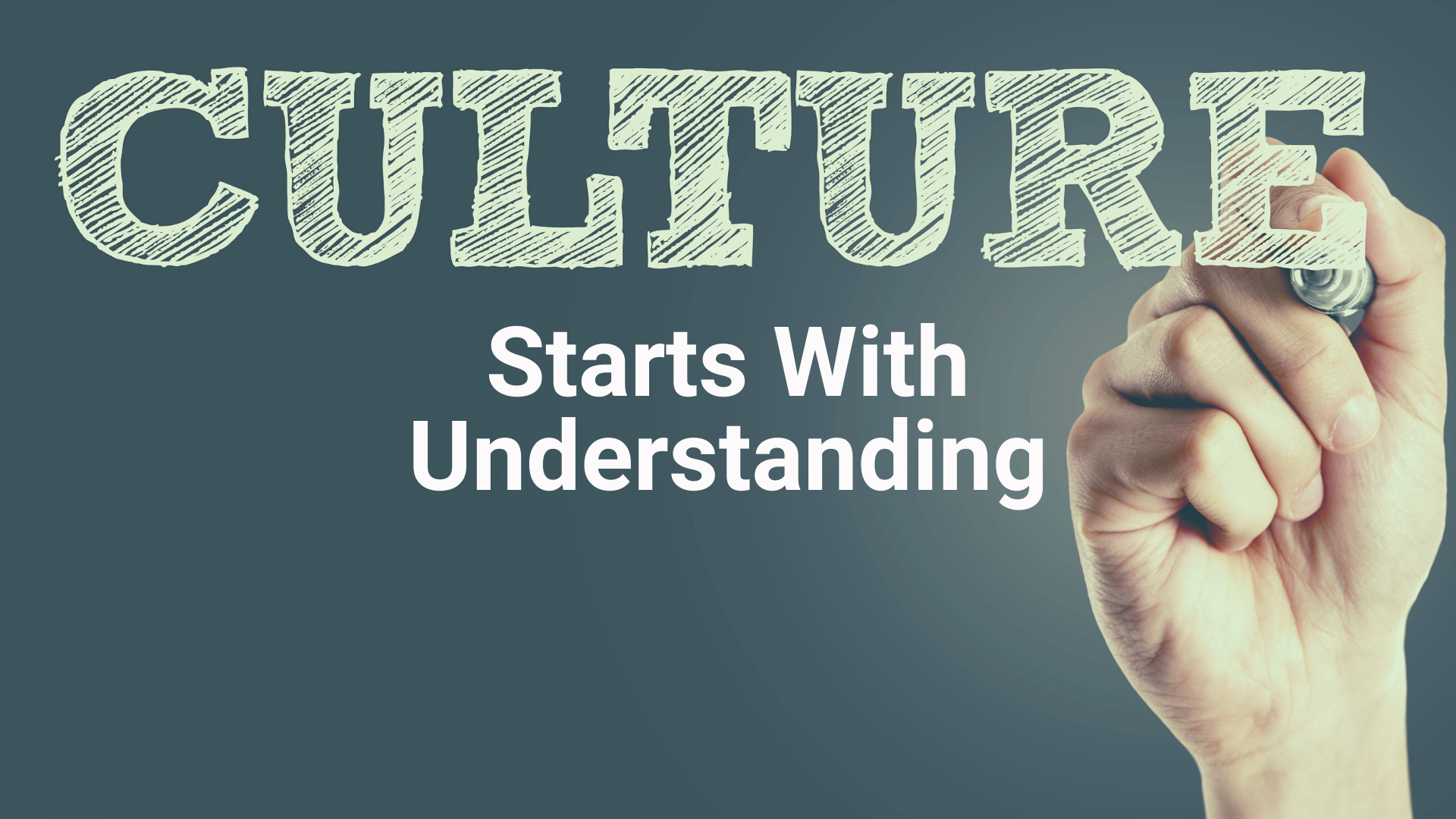You know a culture isn’t static. You’ve seen it change. With the arrival of a new manager or the departure of a key team member.
But the times you updated the espoused values in the company’s mission and vision to spark a deliberate culture change, it seemed to be an immovable rock.
What are you missing? What do you need to get the ball rolling?
That’s a good question. And if you keep reading, I’ll let you in on the secret that’ll release the brakes for you.
Let’s start with the basics.
What are espoused values?
Your values are what you think is important and meaningful and guide how you behave. They’re the principles and standards that guide your behaviour. They’re the standard you hold yourself to even when nobody is watching.
Your espoused values are the values you say are important to you. They’re the stakes you put in the ground to tell others how you want to act. They may be aspirational, or you may already be living them.
It’s the same for organisations. You’ll find their espoused values in their mission and vision statements.
You may have to do a bit of translation work, but you can also find them reflected in a company’s objectives and goals. And when you do, you know the company is taking steps to hold themselves accountable to living these values.
What have espoused values got to do with organisational culture?
Rather a lot, actually.
Culture is the complex mix of ideas, customs, and social behaviour of individuals, groups, organisations, and societies. To assess what sort of organisational culture you've got, have a look at our blog on that here.
Organisational culture, then, is how the ideas, customs, and social behaviour of a company’s employees show up in their everyday interactions — with each other, and with the company’s customers and suppliers.
The espoused values are the guidelines, the stakes in the ground, what the company wants this to look like, and what it wants the culture to be.
Now, the espoused values are easy to find. They’re in the publicly stated mission and vision. And you’ll probably find them prominently displayed on posters, the website, brochures, and every other marketing type communication you can think of.
But what about the actual culture? Where do you go to find something so complex and so immaterial as ideas, customs, and behaviour?
Well, Edgar Schein came up with a model that holds the key to the answer. Let’s have a look.

Edgar Schein's model of organisational culture
In Schein’s model, organisational culture has three levels.
Observable Artifacts is the level of the visible part of the culture. They’re all the ways an organisation expresses what it finds important and meaningful, its values.
Espoused Values is the level of how people in the organisation think that things should be. They’re what they say they find important and meaningful.
Shared Basic Assumptions is the deepest, and mostly hidden level of beliefs and values that are so taken for granted that nobody even talks about them. They’re what override espoused values when push comes to shove.
Culture is like an iceberg, in terms of what you can observe. Only the top of the iceberg sticks up out of the water, the rest is hidden beneath the surface.
According to Schein, you can use that visible part, the observable artifacts, to figure out what’s going on beneath. But there’s a problem with using observable artifacts to identify the shared basic assumptions that drive your culture.
It doesn’t often get talked about. So, let’s change that.
The problem with observable artifacts
The problem is that artifacts are not just an expression of your culture; they also influence your culture. It’s a two-way street, and it takes an excellent detective to disentangle what’s cause and what’s effect.
If you did not design or select the building you work in to support and enhance your culture, it’s only an expression of it in terms of the criteria that played a part in the decision to buy or rent it.
For example, let’s say your company moved into a building because it’s big enough, affordable, and close to public transport.
Everything else about the building is not an expression of your culture, but it does influence it. For example, its layout will play a role in who gets to sit where, affecting how people interact or not, and how they think about each other. “Upstairs, downstairs,” anyone?
So, how about a company in a building that’s a direct expression of what it, or its CEO, considers essential?
Take Apple’s headquarters. Steve Jobs played a significant role in its design. But is the building an expression of his values or that of shared values of Apple’s workforce? And is it an expression of shared basic assumptions or espoused values? If the latter, you can’t merely look at the building to identify your actual culture.

Photo by Kace Rodriguez
Mind the gap: Espoused vs enacted values
Shared basic assumptions are the essence of an organisation’s culture. They’re the enacted values — you can see them in your workforce’s behaviour.
When there’s a gap between espoused and enacted values, you’re in trouble. It means you’re not walking your talk as a company, and that leads to all sorts of undesirable effects.
For one, it’s one of the biggest causes for employee dissatisfaction. It’s hard to feel good about where you work when you regularly see people doing something else than what they say is crucial.
For another, it’s responsible for lack of company success, as your objectives and goals are in line with your espoused values, but your actions and results are in line with your enacted values.
And it’s a big part of “resistance to change.”
People aren’t that resistant to change. They’re resistant to a lack of clarity or secrecy and the uncertainty that comes from that. What gets called resistance to change is merely the effect of shared basic assumptions eating espoused values and desired organisational changes for breakfast.
The secret to releasing the brakes on change is recognising shared basic assumptions, shared values, for the force they are, and dealing with them accordingly.
But how?
How do you change something so ingrained, so utterly obvious, that it’s needless to mention it?
How to close the gap
Where the problem is not
How many times have you seen companies change their espoused values to move to their desired culture and close the gap between their espoused and enacted values?
And how many of those times have you seen that work?
Hardly ever, I’m sure.
The thing is, the problem is not in the espoused values.
Would you bring a ship closer to the quay, closing the gap between them, by changing the quay? If you start a journey to reach a mountain top, would you lower or move that top?
Of course not.
You’d grab hold of one of the ship’s lines and put some muscle into it, and you’d plot your route and put one foot in front of the other.
You don’t change your goal, the dot on the horizon, to get closer to it.
So why change espoused values when you haven’t brought your culture in line with them yet?
Where the real problem is
If the problem isn’t in the espoused values, where is it?
It’s in a lack of understanding, on two levels.
The first is a lack of shared understanding of what living your espoused values, enacting them, specifically looks like.
The second is a lack of understanding by your organisation’s leadership of what it’s really like for their employees to work there — how it feels to you to be there and how you behave as a result.
And it’s in a lack of shared understanding of what living a value looks like because values are abstract words that are open to interpretation.
For example, what I understand to be considerate behaviour is not necessarily how you know it. So when you talked about your espoused values, your workers may have taken it differently than you intended.
So, if understanding is the problem, it makes sense to start there, right?

Photo by Ali Kazal
Your destination and map are useless if you don't know where you are
You wouldn’t start a journey from your destination, would you?
The journey to your desired culture is no different.
You start where you are, by understanding your existing culture, identifying the values that currently drive behaviour in your organisation, and deciding which ones to keep, which to ditch, and which new ones to adopt.
Identifying your current values will take some detective work. Still, it’ll be invaluable in defining your baseline, and if you do it regularly, you’ll be able to see and celebrate your progress.
And then, you want to get specific, very specific. You want to avoid different interpretations. So give explicit examples of actions that are and are not in line with your desired values. Just don’t get so concrete that there’s no room left to breathe. You want to convey the spirit, not lay down the law.
After that, it’s deliberate and focused attention to reinforce behaviours you want to see and stop rewarding the ones you don’t.
Now that you’re clear on the whole process, let’s return to the first step: identifying the shared values that currently drive your organisation’s behaviour.
Identifying shared values through employee listening
One approach is to shine a light on how work gets done. Not how you should do it, but how you actually do it.
Look for patterns. Brainstorm what that says about the value underpinning a pattern. Also look for patterns in what you don’t do. At Google, for example, you won’t find anyone doing anything that would stifle innovation, because they believe it’s essential.
Another approach is to do a value assessment survey — a formal one, like the OCAI, or one of your own making.
You can use a value assessment survey to get everyone’s values and analyse them to find shared values. Or you can use one to identify the values your employees see enacted in how they and their colleagues work.
When you create a survey yourself, be sure to force participants to choose between and prioritise values. Otherwise, you could end up with all values being equally important. For example, you can let them sort values in order of importance or distribute a limited number of votes over a set of values, preferably mutually exclusive ones.
A third approach is to sit back and enjoy the view. Observe. Look at group behaviour. Listen to what’s said. Feel the mood and tone throughout your company.
'Listen' is the crucial word there. A robust employee listening strategy is the essential foundation for understanding and working to strengthen organisational culture.
An excellent way to do that is by using daily check-ins on the Harkn platform. It’ll give you unprecedented insight into the lived experience of everyone who works in your company and allows you to keep your fingers on the pulse of your culture. In real-time, you can see how your folks respond to your decisions, and it can help you separate the mood of the loud nay-sayers from the majority of your crew.
And finally, you can look at decisions and how you make them at any level in your organisation. The most interesting ones are those that require tough choices. What language do you hear when a group is discussing such a choice? What words do they pick? How do they feel about making the decision, and what do they think about the people affected by it?
Close the values gap
As you already knew, culture can and does change.
And now you know the secret to release the brakes on deliberately changing your organisation’s culture. Work on the unspoken shared values that eat espoused values for breakfast.
So, now you can get unstuck and stop feeling like you’re pulling on a dead horse. You have everything you need to close the gap and make those shared values work for you.
If you want more information on how to create a strong employee listening strategy, why not book a virtual coffee with us?




